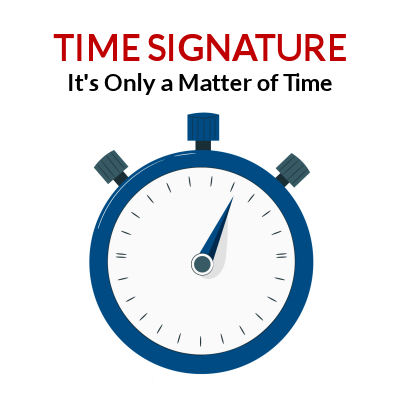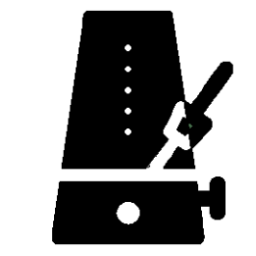Did You Know? The oldest chart topper is Louis Armstrong who at 69 reached number one on the UK charts in 1980 with his hit song "What a Wonderful World."

Determining the Beat and Timing
We've looked at the musical staff and the various clefs on the previous pages so now let's look at the next symbols of notation used to begin a composition. Once you understand these, you'll know which instrument, the count per measure in which the song is written, and how to interpret the notes and rests to follow.

The time signature, also called a meter signature, is placed in the first measure of a composition after the clef. The time signature indicates the number of beats per measure with the top numeral while the bottom numeral indicates to which notes to apply that value. The example shown shows a meter of 4 beats per measure with the quarter note taking a full beat. In this case, 4 beats will total the length of time between bars, one measure. The example above shows the first full measure on the staff.

4/4 time is likely the time signature you will see most in common compositions as its use is quite widespread in modern and popular music. It is often referred to as even meter.

A capital C as the time signature is called Common-time which indicates a meter of 4 beats per measure with quarter notes counting as one beat. It is the equivalent of 4/4 time and is also referred to as even meter.

A capital C with a vertical line drawn through is known as Cut-time which indicates a meter of 2 beats per measure using quarter notes for each beat. It is the equivalent of 2/4 time.

A meter of three is known as triple meter. Any meter of an odd number is known as uneven meter.


